#International Day for the Abolition of Slavery
Text
12/02/2023 is World Futures Day 🌎, Crate Day 🇳🇿, National Fritters Day 🇺🇲, National Mutt Day 🇺🇲, Special Education Day 🇺🇲, National Rhubarb Vodka Day 🇺🇲, SKYWARN Recognition Day 🇺🇲, Small Business Saturday 🇬🇧, International Day for the Abolition of Slavery 🇺🇳

#world futures day#crate day#national fritters day#national mutt day#special education day#national rhubarb vodka day#skywarn recognition day#small business saturday#international day for the abolition of slavery
2 notes
·
View notes
Photo
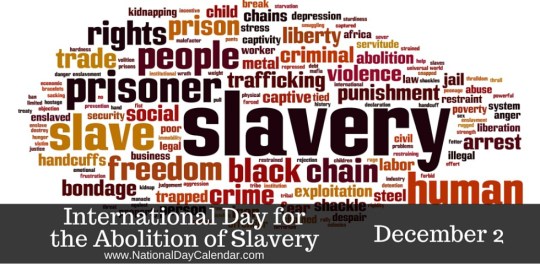
Happy International Day for the Abolition of Slavery!
#international day for the abolition of slavery#day for the abolition of slavery#abolition of slavery#international days of stuff#national days of stuff#tw: slavery#cw: slavery
5 notes
·
View notes
Text
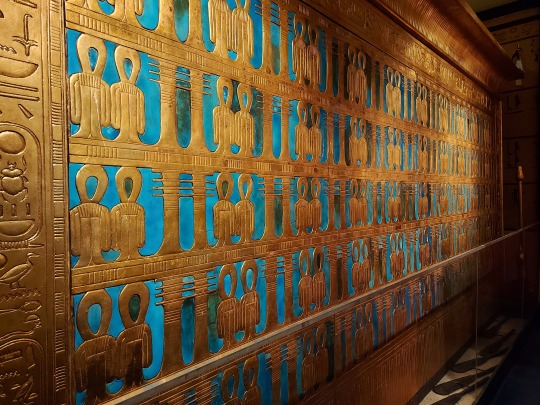
Međunarodni dan ukidanja ropstva
#365project#myupload#december 2023#germany#mannheim#art#art history#museum#exibition#egiptian#International Day for the Abolition of Slavery
1 note
·
View note
Text
#politics#human rights#intersectionalfeminism#feminism#slavery#International Day for the Abolition of Slavery
0 notes
Text
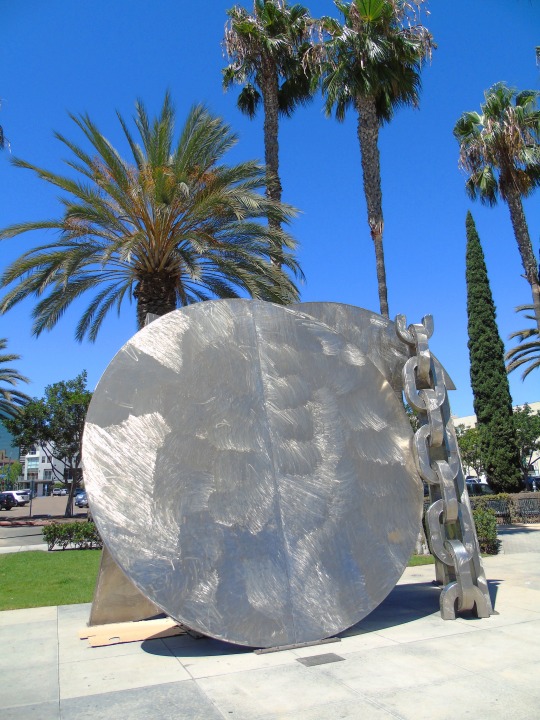



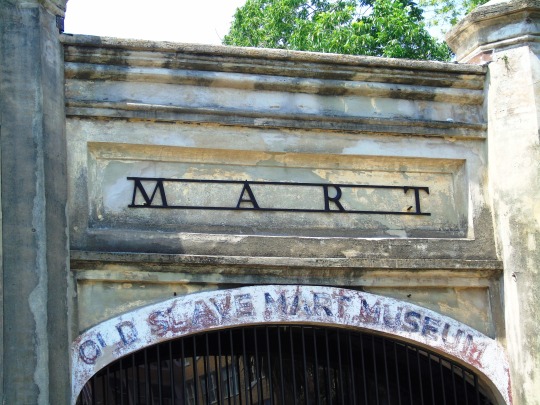

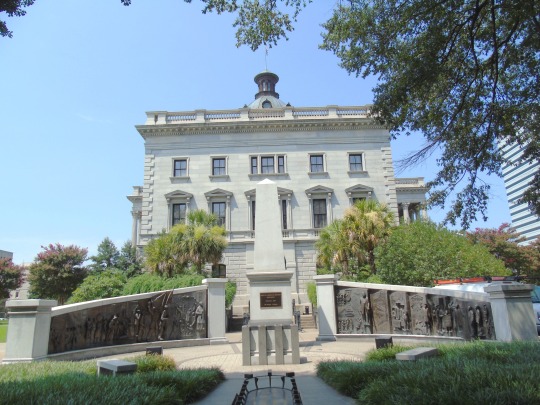


International Day for the Abolition Of Slavery
International Day For The Abolition Of Slavery is an annual celebration observed on December 2nd of each year. Slavery exists in every nook and corner of the world. The abolition of the slavery is indeed a vital thing for any forms of life. The Day is commemorated to raise awareness of the atrocities of modern day slavery. International Day For The Abolition Of Slavery is the adoption date of the United Nations Convention for the Suppression of the Traffic in Persons and of the Exploitation of the Prostitution of Others approved by the General Assembly.
“Now I’ve been free, I know what a dreadful condition slavery is. I have seen hundreds of escaped slaves, but I never saw one who was willing to go back and be a slave.” – Harriet Tubman
History of International Day for the Abolition Of Slavery
The first occurrence of the International Day For The Abolition Of Slavery was held in the year 1986. It was organized by the United Nations General Assembly. The celebration of the Day falls on the same date on December 2, 1949, the United Nations General Assembly has approved the Convention for the Suppression of the Traffic in Persons and of the Exploitation of the Prostitution of Others. The Day focuses on the eradication of the slavery in its contemporary forms. It includes trafficking in persons, sexual exploitation, the worst forms of child labour, forced marriage and forced recruitment of the children for use in the armed conflict.
To recall the convention, a UN report of the Working Group on Slavery suggested that December 2 be proclaimed as the World Day for the Abolition of Slavery in all its forms in 1985. The day was known as the International Day for the Abolition of Slavery by 1995. International Labour Organization (ILO) states that of about 21 million women, men and children around the world are forced into slavery. Sources say that each year more than one million children are trafficked for cheap labour or sexual exploitation. These types of slaveholding are global problems, and it goes against the article four of the Universal Declaration of Human Rights. It states that
“no one shall be held in slavery or servitude, slavery and the slave trade shall be prohibited in all their forms.”
How to Celebrate International Day For The Abolition Of Slavery
Celebrating the International Day For The Abolition Of Slavery is very simple. Take this Day as the best opportunity to indulge yourself to abolish slavery. Learn more about the slavery, history of the slave trade, trafficking in persons and more in detail. Promote awareness about the negative consequences of slavery among the people. Educate people, students, and children about the importance of the abolition of slavery. Raise awareness about this Abolition Of Slavery Day using modern communication tools like flyers, leaflets, posters, and newsletters.
Source
#International Day for the Abolition of Slavery#San Diego#California#USA#Breaking the Chains by Melvin Edwards#monument#public art#Boston#summer 2014#2009#original photography#cityscape#travel#vacation#InternationalDayfortheAbolitionofSlavery#2 December#Emancipation Memorial#Freedman's Memorial#Emancipation Group#Thomas Ball#Charleston#2016#Old Slave Mart Museum#African-American History Monument by Ed Dwight#South Carolina State House#Columbia#architecture#tourist attraction#landmark
1 note
·
View note
Text
Bring into force all the legal instruments necessary to eradicate the scourge.
The United Nations Secretary-General Ban Ki-moon marked the International Day for the Abolition of Slavery 2010 on December 2nd by urging States to bring into force all the legal instruments necessary to eradicate the scourge. Although States worldwide support laws banning slavery.
Annual UN observance spotlights need to eradicate crime of modern slavery.
#united nations secretary general#modern slavery#legal instruments#International Day for the Abolition of Slavery#2 december#Statements
0 notes
Text
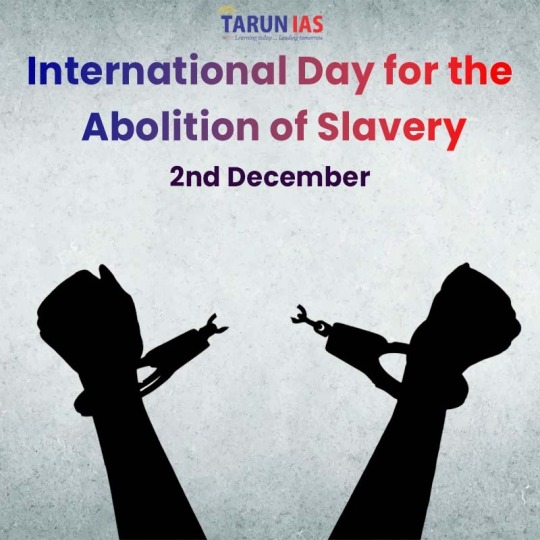
International Day for the Abolition of Slavery
0 notes
Text
shut up about southern hemisphere horse birthday shut up about clown day shut up about yaoi day shut up about international girlfriends day shut up shut up shut up
it is emancipation day.
today is the day in 1834 when the slavery abolition act of the united kingdom came into effect and 'abolished' slavery, transitioning into apprenticeship, in which formerly enslaved people would now have to work 40 hours a week without pay for the same people they were 'freed' from. 4 years later almost to the day, apprenticeship was ended early and slavery was actually abolished.
163 notes
·
View notes
Text
Why the Queen Charlotte Show's Take on Race is Dubious at Best and Harmful at Worst (Also, Was Queen Charlotte Actually Black? An Exploration)
As the promo for the Queen Charlotte show picks up, I'm starting to see a lot of genuinely harmful articles in the news, and they're compounded by Shondaland themselves and the material they've chosen to show the world.
Let's first talk about Shondaland, who decided it was a great idea to double down on the notion that love cured racism, and then proceeded to create a show about Queen Charlotte and King George III, a man who was historically pro-slavery politically, and did nothing about the issue even as abolition sentiment picked up during his reign. Their Valentine's Day event didn't inspire much confidence either; they showed multiple clips that describe this segregated society (their kind don't mix with our kind, or some variation of this, was said a thousand times in each promo clip) where the white people in power (the monarchy) apparently don't engage with the Black nobility until.... suddenly now, when Princess Charlotte is arriving to marry George. Oh also, Corey Mylchreest, the actor who plays George III recommended a book called, The Last King of America: The Misunderstood Reign of George III, written by Baron Roberts of Belgravia, a man who has apparently defended the Jallianwala Bagh massacre and mass internment in Northern Ireland. Lovely. Going back on topic, the clips themselves showed an embarrassingly white-washed portrayal of racism and segregation, and that too, we know it was all magically solved within a generation.
Look, I'm not asking for a tragic POC narrative. But if I'm watching a show where race is a focal point thematically, I want it treated with the respect and consideration it deserves. Not some post-racial-but-not-really fantasy bullshit they're spinning. As my friend @jeanvanjer said, racism isn't simply being "mean" or someone being given the cut-direct. Because here's the thing: Shondaland absolutely had the option of not creating this ridiculous narrative. They could have casted all the same, lovely actors and not explained why this regency fantasy world is diverse! Instead, they decided to bring in race, but then treat it as a fucking joke.
Which brings me to this article:
First of all, for an article that's titled race is "more central" to the Queen Charlotte show, it barely gives us any information as to how. Instead, it gives this quote from Adjoa Andoh:

First of all, "TRUE TO HISTORY"? I'm sorry, is Shondaland and its actors spinning the narrative that Queen Charlotte truly was a mixed-race woman in an effort to legitimize this show's need to create this simplistic racial narrative?
Fine. Lets examine that, shall we? How did Queen Charlotte come to allegedly have a Black ancestor? Let me tell you this: it was not due to love conquering racism. The answer lies in the 1200s. Literally 500 years before Charlotte's birth. Her name was likely Madragana Ben Aloandro, and she was a woman of possibly-Moorish ancestry and a Muslim. She was born in the Algarve when it was still ruled by the Moors, but it was conquered by King Afonso III, who made Madragana his mistress shortly after, had her converted to Christianity, and had her name changed. There are gaps in her story, but if I try to fill them in, I can very well imagine that based on the fact that this man conquered her home by use of military force, and she was around twenty years younger than him, there was... likely a significant lack of consent here along with erasure of identity. This is the woman Charlotte is likely descended from, a woman who was born some 500 years before her, and likely had a negligible contribution to Charlotte's gene pool. But somehow, the show and this article expects us to believe that historical assertions that Charlotte looked like a Black woman, or even counted as biracial, are not racist, but statements of fact.
Indeed, this article relied on disgusting, racist, and obviously biased descriptions from Charlotte's contemporaries including her personal physician Baron Stockmar and Sir Walter Scott as "proof" Charlotte was a mixed-race woman, and then proceeded to tie her to Meghan Markle in terms of the racism they experienced:


These false equivalencies and cherry-picking historical facts have become a hallmark of the Bridgerton show, and now the Queen Charlotte show as well, apparently.
What this show, and Shondaland as a whole, fails to understand is that its take on racial politics is embarrassing and ridiculous for an educated, modern audience. For those of us who are students of history, we cannot accept a narrative like "love cures racism" and simply fly with it, because we know that cheapens not only the romance of this alleged historical romance show, but also the hard-won battles people in history fought in order to freely love who they choose to love.
We cannot accept an even more dangerous potential narrative the show may try to sell us, that segregated societies can be equal by pointing to proof of Black aristocrats in the Queen Charlotte show as an example. Because if there's anything decades of precedent has taught us, a segregated society is inherently unequal.
We cannot accept this Queen Charlotte show than anything more than a thoughtlessly-done portrayal of a segregated society, waiting to magically be fixed by someone— the white man who was historically a racist pro-slaver? A Black woman who wasn't actually Black historically?
Who knows.
#lets talk about charlotte's ancestor Madragana Ben Aloandro#bridgerton#queen charlotte: a bridgerton story#queen charlotte#racism#george iii#shondaland
135 notes
·
View notes
Text
MOGAI BHM- Belated Day 17!
happy BHM! today i’m going to be talking about Black influences on various genres of music! obviously i won’t be able to cover every music genre in this post so im just going to do the ones i know most about!
Spirituals-

[Image ID: A black-and-white drawing of a gathering of Black people in a small, crowded room. At the front of the room, a man dressed in a tuxedo is gesturing grandly at a podium with two other men standing beside him. The rest of the people in the room are all dressed formally and in various positions- some sitting, some bowing, some kneeling, and some standing with their arms raised in the air. End ID.]
Cultures from across the continent of Africa placed huge emphasis on music. Music in many African cultures was very rhythmic, enthusiastic, and depended on participation from entire gatherings of people, not just one person. When people began to be kidnapped for the slave trade, that connection to their specific culture was often lost- but spirituals became a way of reviving that.
Derived from the term ‘spiritual song’ from the Bible, a spiritual is a religious folksong that expressed deep religious themes, and usually themes of resisting oppression in the context of slavery. In the decades leading up to the abolition of slavery in America, spirituals became a very popular musical form amongst slaves at plantations. While their white masters and white populations in general hated the music form because it represented Black freedom and resistance, and therefore gatherings to sing this kind of music were banned, many slaves found ways to still sing spirituals. Spirituals involved call-and-response singing, clapping, and stopping amongst an audience.
Starting in the 1700s, slaves began to gather informally in what were known as “praise houses”. They also held outdoor meetings called ‘brush arbor meetings’. In these gatherings, they would dance, sing, and play music together, as well as pray. At these meetings, they sang ‘corn ditties’, which developed into spirituals. Spirituals developed as a way of maintaining African musical culture in America, uniting against oppression, building hope for a better future, singing praise in a uniquely Black Christian way- and of actually building roads to freedom.
Spirituals were not just used as a way show praise- they were often codes in relation to methods of escaping slavery like the Underground Railroad. Harriet Tubman herself used spirituals like “Go down, Moses” and probably “I got my ticket” to identify herself to slaves seeking escape. Spirituals and their lyrics were often codes of escape for slaves- in this way, spirituals were not just an outlet of rage and pain over oppression, they were a way to actually physically escape it. Other spirituals like “Wade in the Water”, “Swing Low Sweet Chariot”, and “The Gospel Train” spoke about and directly referred to escape methods of the Underground Railroad.
In the 1860s and 1870s, two groups formed- first the Fisk Jubilee Singers (from Fisk University, an HBCU), and then the Hampton Singers, both of whom gained international following for their singing and performing of spirituals. Since then, spirituals have grown as a genre, and have played a part in the development of another major music genre- gospel.
Gospel-

[Image ID: A black-and-white photograph of a group of six Black women. They are standing in two rows of three. Most are wearing fancy white blouses and a wide-brimmed hat, but one is wearing a plaid shirt. They are all holding books and looking at them as they sing. End ID.]
Although early gospel music centered mainly around white churches, it has an undeniably rich place in Black musical and religious history. In the late 1800s and early 1900s, it began to be sung and used more in Black churches. Gospel music as a form, developed from hymns, sacred songs, and other religious musical genres, including spirituals, and was a form of religious music that had one key distinguishing component- church choirs.
Church choirs had long been staples across churches, but especially Black Churches. In Black Churches, choirs were opportunities for people to express their pain through movement and song, as was typical for Black church services at the time. Church choirs were a perfect avenue for the spread and popularization of gospel music within Black Churches.
In the 1930s, a man named Thomas A. Dorsey became known as “the Father of Gospel Music” when he founded a publishing house for Black gospel musicians. He helped push Black gospel music into the American mainstream, and since then, gospel has become a wildly popular musical genre, especially within Black communities.
Hip Hop and Rap-

[Image ID: A black-and-white photograph of people in an outdoor area enclosed by a tall chain-link fence. There are groups of people wandering in the background, and in the foreground, five Black men are gathered around a cluster of tables that are cluttered with musical turntables, fans, papers, wires, and other various objects. One man is crouched in front of the tables and the other four are standing around them. End ID.]
Hip Hop music and rap music developed simultaneously during the 1970s in the Bronx, part of New York City. Black, Latino, and Caribbean communities would hold events known as ‘block parties’, where people gathered as a DJ played music like soul and funk. These events were collaborations between Black and Latino people living in New York City.
At these block parties, some people began to experiment with different types of rhythms and beats. It was common for DJs and performers to play around with various techniques like beatboxing, beat breaks, percussive sounds, scratching, and turntable techniques. This experimentation led to the developing sounds of hip hop and rap. The two genres, characterized by strong rhythmic beats and rapping tracks, began to take hold. A decade later, hip hop was a thriving musical genre.
The first hip hop record released was “Rapper’s Delight” by the Sugarhill Gang in 1979. Since then, hip hop and rap have become some of the dominant musical genres in America. They have produced many, many sub-genres, like trap, nu metal, and grime. These genres have expanded to include different lyrical styles, drum kits, and lyrical contents- all owing to the collaboration between Black and Latino musical artists in the 1970s.
Hip hop and rap have had a huge impact on American, especially Black American, culture. They have helped popularize different combinations of jazz, soul, and hip hop, breakdancing, beatboxing, and other musical styles and techniques. Many hip hop and rap artists have deepened the meaning of the genre by using their lyrics as an expression of yearning for societal liberation, and challenging the systems that be with raw, honest lyrics has become a staple of many areas of rap and hip hop.
Black Influence on Rock’N’Roll-

[Image ID: A black-and-white photograph of Sister Rosetta Tharpe, a heavier Black woman with short hair. In the photo, she is wearing a large fancy dress with very puffy sleeves and a tiny bow, and is smiling widely as she plays guitar at a microphone on stage. End ID.]
Although the development and popularization of rock’n’roll is usually attributed to Elvis Presley, that is simply not historically accurate. Rock’n’roll began to develop in the late 1940s and throughout the 1950s- and it developed out of southern Black musical genres, namely blues music, which proliferated during the Harlem Renaissance and spread from the South. Blues evolved into the famous R&B (rhythm and blues) genre, which evolved into rock’n’roll. A lot of rock’n’roll’s sound also owes itself to the rhythmic patterns of much West African music.
In the 1940s and 50s, blues artists began experimenting and developing the blues sound into what we now know as rock’n’roll. Taking inspiration from other musical genres like country (which has also been heavily influenced by Black people). Sister Rosetta Tharpe was a Black woman who started out as a blues singer. She was a self-taught guitarist, and through her work on developing the sounds of the guitar she played, she pretty much singlehandedly set the tone for the guitar sounds that defined rock’n’roll- her style and influence directly inspired and impacted Elvis Presley.
When rock’n’roll first developed, the genre was pretty much exclusively occupied by Black artists from the likes of Ike Turner and Bo Diddley to Little Richard and Chuck Berry. Black women have also had a huge impact on the genre of rock’n’roll. From Sister Rosetta Tharpe herself, to the all-Black girl group “The Shirelles”, Merry Clayton, and Tina Turner herself. Rock’n’roll has from its birth been built and defined by Black artists, and Black rock’n’roll has heavily influenced music by some of the most famous rock’n’roll groups of all time, like the Beatles and the Rolling Stones.
Odetta, Jimi Hendrix, Prince, all Black rock’n’roll artists who have left an invaluable footprint on music and history. Other incredible Black artists who shaped the genre include Odetta, a Black woman who experimented mixing blues, jazz, and folk music and sang with Martin Luther King Jr. at the famous 1963 March on Washington, Martha and the Vandellas, whose music was a call for solidarity, and the Supremes, arguably one of the most iconic, influential all-female musical groups not just of rock’n’roll, but of all time.
Black Influence on Country Music-

[Image ID: A black-and-white photograph of Charley Pride. He is a Black man with a small afro, and he’s wearing a patterned suit jacket over a white collared shirt and strumming the guitar as he stands by a microphone, smiling. End ID.]
Country music is one of the most popular, well-known musical genres of all time- and it developed in the 1920s as a blend from several other genres- the two main ones being blues and folk songs, both of which originated as Black musical genres. Spirituals were the first folk songs of America, and they defined the roots of the folk musical genre. Blues music developed on Deep South plantations and was a popular musical genre amongst enslaved populations in the South.
Jimmie Rodgers is a white man who is often hailed as the “Father of Country Music”- but he learned everything he knew from Black workers with whom he worked at a railroad track. They taught him how to play guitar and banjo, influenced the musical style of yodeling which he popularized, and taught him falsetto notes and styles. Hank Williams, another white figure hailed as a key builder and trailblazer in country music, also learned his musical style from another Black musician named Rufus “Tee Tot” Payne.
DeFord Bailey was a Black man who popularized the usage of the harmonica in blues and country music. He was the first country artist to be recorded in Nashville, and one of the most popular regular performers at the Grande Ole Opry, part of a popular Nashville radio station.
Two of the most defining instruments of the country genre are the banjo and the “Euphonica” (large acoustic guitar). Both of these instruments were invented by Black people. The banjo was invented by enslaved Black people in the South, inspired by some West African musical traditions, and the “Euphonica” as it was called, was developed by a Black man named Robert Flemming, Jr. Early Black artists like Charley Pride were Black staples of the genre.
Today, country music is filled with Black artists making a difference- from Kane Brown and Jimmie Allen, to Darius Rucker and Mickey Guyton, to BRELAND and Tiera Kennedy- country as a musical genre has always had strong roots in Black music, Black resistance, and Black pride.
Black Influence on Alternative/Grunge Music-

[Image ID: A color photograph of Tina Bell. She is a Black woman who is wearing a messily tousled blonde wig and a black leather jacket. She is smiling widely as she writes on poster boards with a black permanent marker. End ID.]
Alternative and grunge music developed as a blend of various rock genres, like punk. The distinct sound of grunge music has been called “The Seattle Sound”, as it developed in the Seattle music scene. Known as the “godmother of grunge”, Tina Bell was a Black woman who, with her husband, started Bam Bam, the band that pioneered the genre of grunge, in 1983. Tina and her band were the first to record at the studio that would eventually sign and record such famous grunge bands as Nirvana and Pearl Jam.
Since Tina’s success with Bam Bam and the boom of the Seattle music scene, Black bands have helped define the alternative music genre- from groups like Meet Me At The Altar and Pulses, to One Life To Lead and Big Joannie, Black alternative and Black grunge music has remained an integral part of the genre.
Summary-
Spirituals are a rhythmic form of call-and-response singing which developed during slavery in America and are the earliest of American folk songs
Gospel music developed from spirituals, hymn songs, and other religious songs, and became a staple of both Black religious and Black secular music
Hip Hop and rap both developed together at block parties in the 1970s as a collaboration between Black and Latino DJs and other artists in the Bronx
Rock’n’roll developed out of blues music, a Black musical genre, and its sound was developed and pioneered by Black artists like Little Richard and Sister Rosetta Tharpe, who directly inspired the biggest rock’n’roll names of all time
The banjo and the larger acoustic guitar, staples of country (which developed out of Black musical genres like folk songs, or early spirituals, and blues), were both developed by Black people
Alternative music was pioneered by a Black woman named Tina Bell and her band, Bam Bam
tagging @metalheadsforblacklivesmatter @intersexfairy @cistematicchaos
Sources-
https://www.loc.gov/item/ihas.200197495/#:~:text=A%20spiritual%20is%20a%20type,legalized%20slavery%20in%20the%201860s.
https://www.negrospirituals.com/history.htm
https://www.masterclass.com/articles/hip-hop-guide
https://www.npr.org/2007/02/22/7550286/the-birth-of-rap-a-look-back#:~:text=Rap%20as%20a%20genre%20began,generally%20interacting%20with%20the%20audience.
https://www.masterclass.com/articles/gospel-music-guide
https://zora.medium.com/the-black-mother-of-grunge-who-inspired-nirvana-95886f21eccc
https://distortedsoundmag.com/black-musicians-in-alternative-music-that-you-absolutely-should-be-listening-to/
https://www.altpress.com/upcoming-black-alternative-bands-artists/
https://www.mic.com/articles/136969/who-invented-rock-n-roll-these-are-the-black-pioneers-who-laid-the-genre-s-foundations
https://www.nyu.edu/about/news-publications/news/2020/november/the-black-women-behind-rock-and-roll-.html
https://www.rollingstone.com/music/music-pictures/black-women-who-shaped-rock-1122749/sister-rosetta/
https://theboot.com/black-country-music-history/#:~:text=Negro%20spirituals%20sung%20by%20enslaved,the%20genre's%20established%201920s%20roots.
https://baytownsun.com/local/article_754833c2-838a-11ec-8466-efc641316abb.html#:~:text=Robert%20F.,patent%20on%20April%205%2C%201887.
https://music.si.edu/spotlight/banjos-smithsonian#:~:text=The%20banjo%20was%20created%20by,of%20rural%20and%20urban%20settings.
https://time.com/5673476/ken-burns-country-music-black-artists/
124 notes
·
View notes
Text
The president of France on Thursday stepped into the cold mountain prison where Toussaint Louverture, a famed leader of the Haitian Revolution, died 220 years ago after being tricked, kidnapped and secreted across an ocean and into the French hinterland.
Standing in the armory, not far from the cell where Louverture spent his last days, President Emmanuel Macron called the man who took on France after being freed from slavery a hero who embodied the true values of the Enlightenment and the French Revolution.[...]
He glossed over the racism and colonial oppression that led to Louverture’s imprisonment and said nothing about the lingering effects of the country’s slaving past. In particular, he did not mention the ransom that France extorted from Haiti to compensate former slave owners and that hobbled Haiti’s economic development for more than a century. [...]
Louverture grew up enslaved in what was then France’s most prized and brutal colony, Saint-Domingue, later Haiti. He went on to become one of the leaders of the slave rebellion that prompted the revolutionary government in France to declare an end to slavery across all the colonies in 1794, at the height of the trans-Atlantic slave trade.
But then Napoleon came to power, sent warships to crush the former colony — unsuccessfully — and reimposed slavery in the French empire. Louverture was seized, and imprisoned without trial.
It wasn’t for another 46 years that France, on April 27, 1848, abolished slavery for a second and final time.
By honoring Louverture, a figure of the first abolition, on the anniversary of the second one, Mr. Macron engaged in an act of historical incongruity that blurred the message, said Myriam Cottias, director of the International Research Center on Slavery and Post-Slavery in Paris.
The first abolition was brought about by a bloody slave uprising, while the second reflected the ideals of the French Republic, notably equality. Plus, Ms Cottias noted, Louverture was betrayed by Napoleon, an autocrat who crowned himself emperor.
“To celebrate the Republic in the place where we killed a small flame, a man of the Enlightenment, and where the person who made that man die was also the one who killed the Republic — that ambiguity, I find extremely harmful,” she said.[...]
much of his history remains forgotten in France, said Jean-Marc Ayrault, a former French prime minister and the head of France’s Foundation for the Remembrance of Slavery. A report published by the foundation in 2020 said that only one in 10 French primary and secondary school students learn about Louverture and the Haitian Revolution.[...]
Ms. Cottias said that France’s fervent belief in the republican ideal of equality [sic] is part of the reason the topic remains so sensitive.
“It’s hard for people to understand that the history of slavery and colonial history is part of France’s history, and not a history on the side,” she said. “It’s the sticking point.”
France’s legacy in Haiti did not end with its declaration of independence in 1804.
In 1825, French warships returned and forced the young country to pay compensation for the colonial losses, or face war. Haiti became the world’s first and only country in which the descendants of enslaved people paid reparations to the descendants of their masters, for generations. That debt, and the loans the country took out to pay for it, crippled the country’s economy for more than a century.
A New York Times investigation revealed that over six decades, Haiti sent $560 million in today’s dollars to descendants of former colonists and the banks that offered the first loan. Had that money stayed in the country, it would have grown the economy from $21 billion to $115 billion over two centuries. And that does not include later loans taken out.
Several prominent scholars, activists and politicians in both France and Haiti have long called on France to return the money. Mr. Ayrault, the former prime minister, said his foundation would lobby for a commission to shed light on the history of these payments.
But Mr. Macron did not mention the debt in his speech, emphasizing instead the symbolic power of the tribute. “The simple fact of pronouncing this name, Toussaint Louverture, is therefore a reparation for the affront made to a great Frenchman,” he said.
Mr. Macron barely referred to contemporary Haiti, which is plagued by gang violence.[...]
Leslie Voltaire, a former Haitian official, welcomed the tribute but said France owed Haiti more than words.
“The legacy of Haiti is a legacy of trying to reimpose slavery, and forcing a neocolonial regime by debt,” Mr. Voltaire, who campaigned for financial compensation from France as a government minister 20 years ago, said from Port-au-Prince.
Mr. Voltaire pointed out that a former French president, François Hollande, promised to repay that debt in 2015.
“I would have liked to hear a follow-up to that,” he said.
27 Apr 23
64 notes
·
View notes
Text
In 1807, Omar ibn Said, a Muslim scholar, was stolen from Senegal & sold into slavery in America. He left behind an autobiography written in Arabic. To mark the International Day for the Remembrance of the Slave Trade & its Abolition, here is the remarkable story of Omar…
#Omar ibn Said#article#american slavery#chattel slavery#history#american history#african history#muslim scholar#autobiography#Arabic
13 notes
·
View notes
Text
Events 3.16 (after 1970)
1977 – Assassination of Kamal Jumblatt, the main leader of the anti-government forces in the Lebanese Civil War.
1978 – Former Italian Prime Minister Aldo Moro is kidnapped; he is later murdered by his captors.
1978 – A Balkan Bulgarian Airlines Tupolev Tu-134 crashes near Gabare, Bulgaria, killing 73.
1978 – Supertanker Amoco Cadiz splits in two after running aground on the Portsall Rocks, three miles off the coast of Brittany, resulting in the largest oil spill in history at that time.
1979 – Sino-Vietnamese War: The People's Liberation Army crosses the border back into China, ending the war.
1984 – William Buckley, the CIA station chief in Lebanon, is kidnapped by Hezbollah; he later dies in captivity.
1985 – Associated Press newsman Terry Anderson is taken hostage in Beirut; he is not released until December 1991.
1988 – Iran–Contra affair: Lieutenant Colonel Oliver North and Vice Admiral John Poindexter are indicted on charges of conspiracy to defraud the United States.
1988 – Halabja chemical attack: The Kurdish town of Halabja in Iraq is attacked with a mix of poison gas and nerve agents on the orders of Saddam Hussein, killing 5,000 people and injuring about 10,000 people.
1988 – The Troubles: Ulster loyalist militant Michael Stone attacks a Provisional IRA funeral in Belfast with pistols and grenades. Three persons, one of them a member of PIRA are killed, and more than 60 others are wounded.
1995 – Mississippi formally ratifies the Thirteenth Amendment to the United States Constitution, becoming the last state to approve the abolition of slavery. The Thirteenth Amendment was officially ratified in 1865.
2001 – A series of bomb blasts in the city of Shijiazhuang, China kill 108 people and injure 38 others, the biggest mass murder in China in decades.
2003 – American activist Rachel Corrie is killed in Rafah by being run over by an Israel Defense Forces bulldozer while trying to obstruct the demolition of a home.
2005 – Israel officially hands over Jericho to Palestinian control.
2010 – The Kasubi Tombs, Uganda's only cultural World Heritage Site, are destroyed in a fire.
2012 – Former Indian cricketer Sachin Tendulkar becomes the first batter in history to score 100 centuries in international cricket.
2014 – Crimea votes in a controversial referendum to secede from Ukraine to join Russia.
2016 – A bomb detonates in a bus carrying government employees in Peshawar, Pakistan, killing 15 and injuring at least 30.
2016 – Two suicide bombers detonate their explosives at a mosque during morning prayer on the outskirts of Maiduguri, Nigeria, killing 24 and injuring 18.
2020 – The Dow Jones Industrial Average falls by 2,997.10, the single largest point drop in history and the second-largest percentage drop ever at 12.93%, an even greater crash than Black Monday (1929). This follows the U.S. Federal Reserve announcing that it will cut its target interest rate to 0–0.25%.
2021 – Atlanta spa shootings: Eight people are killed and one is injured in a trio of shootings at spas in and near Atlanta, Georgia, U.S. A suspect is arrested the same day.
2022 – A 7.4-magnitude earthquake occurs off the coast of Fukushima, Japan, killing 4 people and injuring 225.
2 notes
·
View notes
Text
Holidays 12.20
Holidays
Abolition Day (Réunion)
Big Chungus Day
Bo Aung Kyaw Day (Burma)
Captain America Day
Cathode-Ray Tube Day
Day of National Mourning (Panama)
Dot Your I's Day
Dot Your I's With Smiley's Day
Fête des Cafres (Abolition of Slavery Day; Réunion, French Guiana)
Fifty Ways To Leave Your Lover Day
Fur-Day
Games Day
Go Caroling Day
Halcyon Days of Calm Seas begin
International Human Solidarity Day (UN)
Invocation of Molag Bal (Elder Scrolls)
Katharina von Bora Day
Kitzmas
Louisiana Purchase Day
Make An Ornament Day
Mudd Day
National Gregory Day
National Steven Day
Patient Empathy Day
Poet Laureate Day
Resilience Night
Ring of Troth Day
Sacagawea Day
SARE Day (Macau)
Security Agency Worker’s Day (Russia)
Shovel Day (French Republic)
Space Force Day
Stolen Day
Tammasmass E'en (Orkney Islands)
Try to Remember Where You Hid the Christmas Gifts Day
World Day of Skepticism
World Kajalism Day
Wrinkled Shirt Day
Yuletide Lad #9 arrives (Bjugnakraekir or Sausage Pilferer; Iceland)
Food & Drink Celebrations
BPT Remembrance Day (Before Pop Tarts)
National Parsley Day
National Sangria Day
Pop Tart Day
3rd Wednesday in December
National Early Signing Day (NCAA Football) [3rd Wednesday]
Independence Days
Camboriu (Declared; 2019) [unrecognized]
Campinia (Declared; 2000) [unrecognized]
Lycem (Declared; 2012) [unrecognized]
Macau (Macau Special Administrative Region established, 1999)
St. John (Declared; 2013) [unrecognized]
Feast Days
Cheech & Chong Day (Church of the SubGenius; Saint)
Dominic of Silos (Christian; Saint)
Guyton Morveau (Positivist; Saint)
Hogswatchnight (in Discworld) [December 32]
Mōdraniht (Mother’s Night; Anglo-Saxon Pagans)
Mother Night (Beginning of Yuletide; Celtic, Pagan) [Begins at Sunset]
Not Frank Zappas Birthday (Pastafarian)
O Clavis David (4th O Antiphon or Great Advent Antiphon; Christian) [O Key of David; 4 of 7]
Paul of Latrus (Christian; Saint)
Philogonius (Christian; Saint)
Pieter De Hooch (Artology)
Pongol of the Sun (Hindu)
The Refined Young Cannonballs (Muppetism)
Saturnalia Day 4: Unbound (Pagan)
Swashbuckling Day (Pastafarian)
Ursicinus of Saint-Ursanne (Christian; Saint)
Katharina von Bora (Lutheran)
Yaldā (Iran; eve of the birth of Mithra) [Day before Winter Solstice]
Lucky & Unlucky Days
Fortunate Day (Pagan) [50 of 53]
Lucky Day (Philippines) [69 of 71]
Shakku (赤口 Japan) [Bad luck all day, except at noon.]
Premieres
All That Jazz (Film; 1979)
Aquamania (Disney Cartoon; 1961)
Born on the Fourth of July (Film; 1989)
Cat Feud (WB MM Cartoon; 1958)
Cats (Film; 2019)
The Color Purple (Film; 1985)
Concert for Bangladesh (Live Album; 1971)
Double Dribble (Disney Cartoon; 1946)
Dreamgirls (Broadway Musical; 1981)
Everybody Plays the Fool, recorded by The Main Ingredient (Song; 1971)
Father of the Bride (Film; 1991)
Flaming Star (Film; 1960) [Elvis Presley #6]
Gangs of New York (Film; 2002)
The Girl with the Dragon Tattoo (Film; 2011)
The Godfather Part II (Film; 1974)
The Greatest Showman (Film; 2017)
Grimm’s Fairy Tales (Fairy Tale Collection; 1812)
Hare Lift (WB LT Cartoon; 1952)
The Horse in the Gray Flannel Suit (Film; 1968)
Hot Rocks 1964-1971, by The Rolling Stones (Compilation Album; 1971)
Island at the Top if the World (Film; 1974)
It’s a Wonderful Life (Film; 1946)
Ivanhoe, by Walter Scott (Novel; 1819)
JFK (Film; 1991)
Jumanji: Welcome to the Jungle (Film; 2017)
Lover Come Back (Film; 1961)
The Man with the Golden Gun (US Film; 1974) [James Bond #9]
My Fellow Americans (Film; 1996)
Name That Tune (Radio Series; 1952)
Out of Africa (Film; 1985)
Percy Jackson and the Olympians (TV Series; 2023)
Persuasion, by Jane Austen (Novel; 1817) [#6]
Rocky’s Dilemma or A Squirrel in a Stew (Rocky & Bullwinkle Cartoon, S1, Ep. 7; 1959)
Rosamunde, by Helmina von Chézy with incidental music by Franz Schubert (Play; 1823)
The Sand Pebbles (Film; 1966)
Scream (Film; 1996)
Star Wars: Episode IX — The Rise of Skywalker (Film; 2019)
The Submarine Squirrel or 20,000 Leagues Beneath the Sea (Rocky & Bullwinkle Cartoon, S1, Ep. 8; 1959)
They Were Expendable (Film; 1945)
Two Weeks Notice (Film; 2002)
Winnie the Pooh and the Blustery Day (Disney Cartoon; 1968)
Winnie the Pooh and Tigger Too! (Disney Cartoon; 1974)
The Witcher (TV Series; 2019)
Today’s Name Days
Eike, Holger, Julius, Regina (Austria)
Ignat (Bulgaria)
Eugen, Julije, Makarije, Slobodan, Zefirin (Croatia)
Dagmar (Czech Republic)
Abraham (Denmark)
Pärja, Pärje (Estonia)
Benjamin, Kerkko (Finland)
Isaac, Jacob, Théophile (France)
Eike, Holger, Julius (Germany)
Ignatios (Greece)
Teofil (Hungary)
Liberato, Macario (Italy)
Abrams, Argods, Arta, Minjona (Latvia)
Daugardas, Gražvilė, Teofilis (Lithuania)
Abraham, Amund (Norway)
Amon, Bogumiła, Dominik, Liberat, Teofil (Poland)
Ignatie (Romania)
Dagmara (Slovakia)
Domingo, Eugenio, Teófilo (Spain)
Israel, Moses (Sweden)
Ammon, Roxana, Roxanne, Roxie (USA)
Today is Also…
Day of Year: Day 354 of 2024; 11 days remaining in the year
ISO: Day 3 of week 51 of 2023
Celtic Tree Calendar: Ruis (Elder) [Day 23 of 28]
Chinese: Month 12 (Jia-Zi), Day 8 (Ren-Zi)
Chinese Year of the: Rabbit 4721 (until February 10, 2024)
Hebrew: 8 Teveth 5784
Islamic: 7 Jumada II 1445
J Cal: 24 Zima; Threesday [24 of 30]
Julian: 7 December 2023
Moon: 61%: Waxing Gibbous
Positivist: 18 Bichat (13th Month) [Guyton Morveau]
Runic Half Month: Jara (Year) [Day 10 of 15]
Season: Autumn (Day 89 of 89)
Zodiac: Sagittarius (Day 29 of 30)
2 notes
·
View notes
Text
Happy International Day for the Abolition of Slavery!
Today's video is Episode 42 of @Burrows_VN!
"Smile Like You Remember {Ken}"
Ken and Grey reunite with Colt and Jessie as they somehow end up in North Dakota to catch a show.
youtube
3 notes
·
View notes
Text
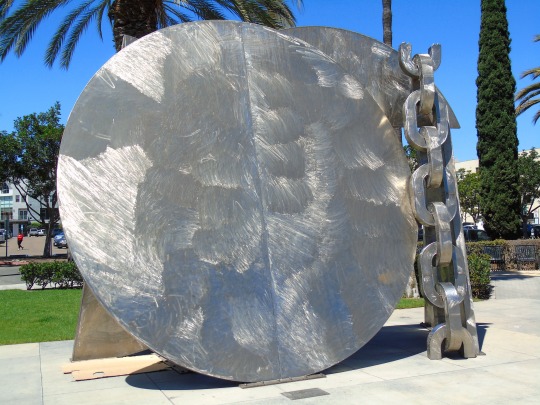


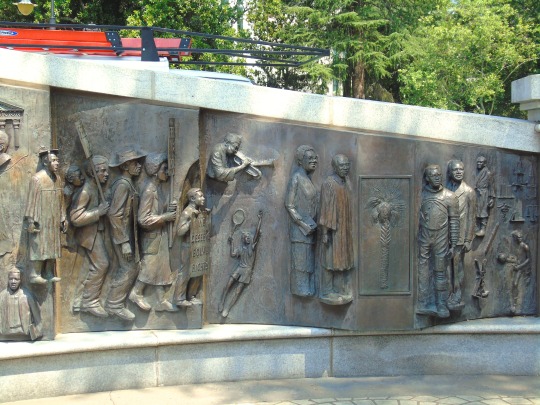














The International Day of Remembrance of the Victims of Slavery and the Transatlantic Slave Trade
The International Day of Remembrance of the Victims of Slavery and the Transatlantic Slave Trade is honored on March 25. It was observed for the first time in 2008. The day honors and recalls the more than 15 million people who were brutalized for over 400 years as a result of a slave system. The Panamanian port city of Portobelo is a key entry site during the transatlantic slave trade for enslaved Africans who would then be transported to various locations if they survive the treacherous ocean voyages. Despite its abolition, slavery still exists today in various ways.
HISTORY OF INTERNATIONAL DAY OF REMEMBRANCE OF THE VICTIMS OF SLAVERY AND THE TRANSATLANTIC SLAVE TRADE
The transatlantic slave trade was the world’s largest forced migration and unquestionably one of the cruelest. Over 400 years, a massive exodus of Africans spread over the globe in a way that had never been seen before or recorded in human history. Between 1501 and 1830, a ratio of four to one African to European crossed the Atlantic, making the American population more of an extension of Africans than Europeans.
During the 16th century and up to the 19th century, approximately 15 to 20 million individuals were carried against their will from Africa to Central, South, North America, as well as Europe. The transatlantic slave trade was a profitable triangular commerce between Europe, the Americas, and West Africa. It provided the foundation for most of Britain’s prosperity. Slaves were traded as men, women, and children in various slave trading systems. During the travels, up to 2.4 million slaves died, with millions more dying soon after. Slaves were sold to serve as domestic servants, on plantations, mines, and rice fields.
Britain was the first country to establish legislation prohibiting the slave trade in 1807, and by 1815, the British had persuaded the Netherlands, Spain, France, and Portugal to follow suit. Slave trading was made illegal in the United States nearly five years later, in 1820, and was eventually abolished in 1865.
INTERNATIONAL DAY OF REMEMBRANCE OF THE VICTIMS OF SLAVERY AND THE TRANSATLANTIC SLAVE TRADE TIMELINE
1619
Arrival on Virginia Shores
A Dutchman forces the first captives onto Virginia's shores.
1776
Signs of Segregation
Slaves, Africans, and African Americans are not included in the Declaration of Independence.
1865
Slavery is Abolished in America
Slavery is abolished in the United States.
1950s and 1960s
Anti-segregation March
Civil rights leaders lead anti-segregation marches across the country.
2013
Slavery in the 21st Century
Approximately 25 to 40 million people are still enslaved, the majority of these in Asia.
INTERNATIONAL DAY OF REMEMBRANCE OF THE VICTIMS OF SLAVERY AND THE TRANSATLANTIC SLAVE TRADE FAQS
Who started enslaving Africans?
The Portuguese.
Is there a day for Anti-slavery?
There is, indeed. October 18 is Anti-Slavery Day.
Who created slavery?
Sumer or Sumeria is believed to be the birthplace of slavery.
HOW TO OBSERVE INTERNATIONAL DAY OF REMEMBRANCE OF THE VICTIMS OF SLAVERY AND THE TRANSATLANTIC SLAVE TRADE
Spread awareness: Make use of your platform and voice to raise awareness about the perils of racism and discrimination in today's world. Use the hashtag #rememberanceofvictimsoftransatlanticslavetrade to share posts and facts concerning racism.
Make donations: With a sad heart, we must also accept that, despite the abolition of slavery, it continues to exist in modern forms. You may donate or learn more about how to help victims of modern-day slavery by visiting the United Nations Voluntary Trust Fund on Contemporary Forms of Slavery.
Visit the Ark of Return: Visit The Ark of Return, a permanent memorial honoring slavery and the transatlantic slave trade victims. The visible reminder that slavery's legacy, such as prejudice and inequality, continues to have an impact on us.
5 FACTS WORTH KNOWING ABOUT THE SLAVE TRADE
A long journey: Journeying from Africa to America took approximately seven weeks.
Beginning of the Atlantic slave trade: In the 1440s, the Atlantic slave trade began.
Slaves were used on plantations: Enslaved Africans were taken to Portugal or Atlantic islands like Madeira to labor in agriculture.
The first beneficiaries: The Portuguese were the first to embark on and make huge profits from the slave trade.
West Central Africa: About 40% of people taken into slavery were from West-Central Africa.
WHY INTERNATIONAL DAY OF REMEMBRANCE OF THE VICTIMS OF SLAVERY AND THE TRANSATLANTIC SLAVE TRADE IS IMPORTANT
It teaches us about a sad past: Learning about the dehumanizing treatments and effects of slavery will prompt us to action. The future can only be better if we learn from the mistakes of the past. This will lead to the wholeness and healing that the world so desperately needs.
It honors the victims of the slave trade: The event commemorates and pays respect to the millions of lives lost to slavery and the transatlantic slave trade. It also emphasizes the prevalence of modern-day slavery and the need to eradicate it.
It helps to promote awareness: Even though slavery has been abolished for over 400 years, its legacy lives on. This day brings attention to the events that occurred and how retribution can be carried out. It also raises awareness about the negative effects of racism and prejudice.
Source
#International Day of Remembrance of the Victims of Slavery and the Transatlantic Slave Trade#25 March#Breaking the Chains by Melvin Edwards#public art#San Diego#Abraham Lincoln#Boston#Old Slave Mart Museum#Charleston#Pompey Square#Nassau#Bahamas#former slave mart#cityscape#photography#photoset#travel#original photography#vacation#tourist attraction#landmark#architecture#Emancipation Statue by Thomas Ball
2 notes
·
View notes